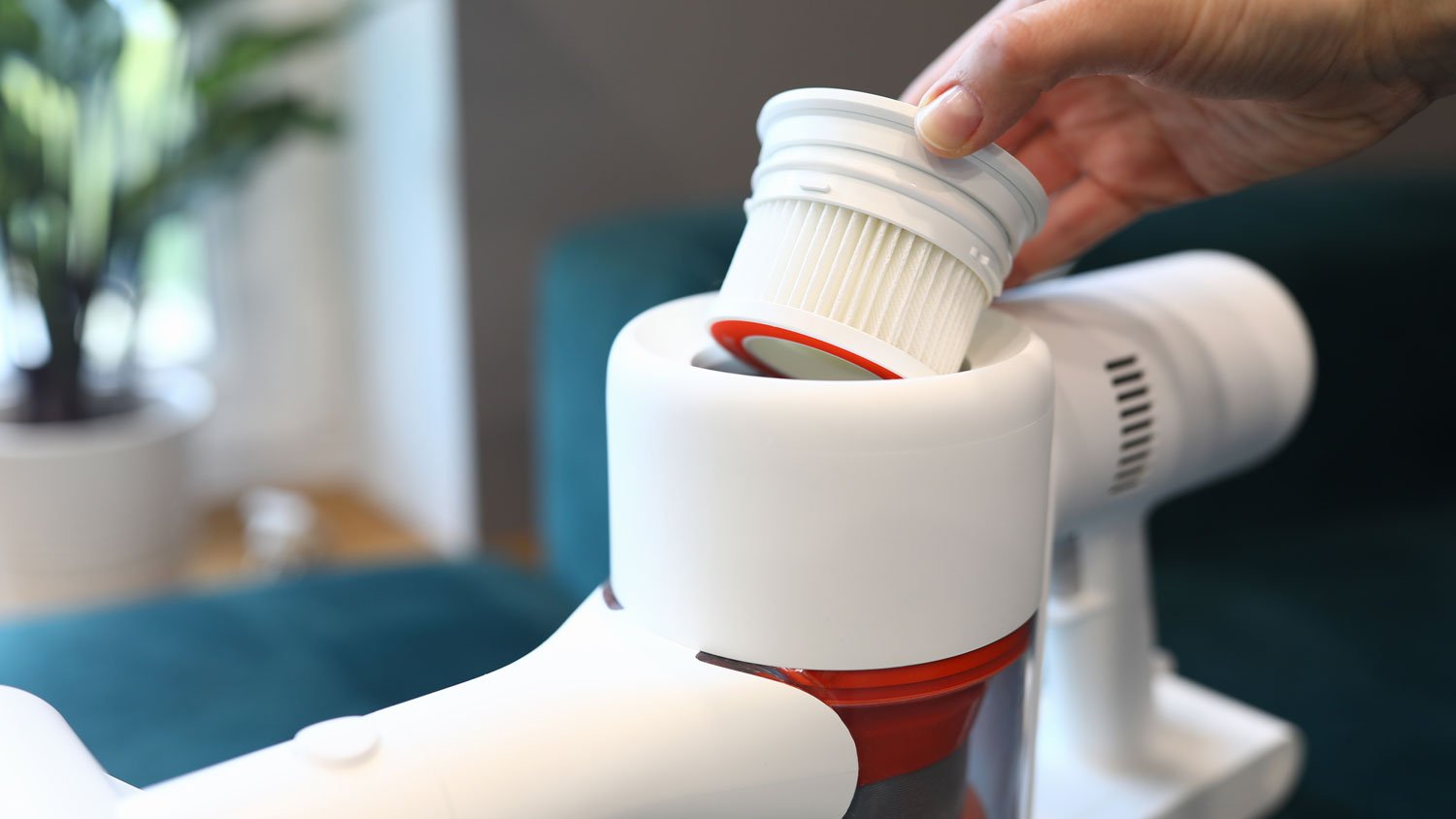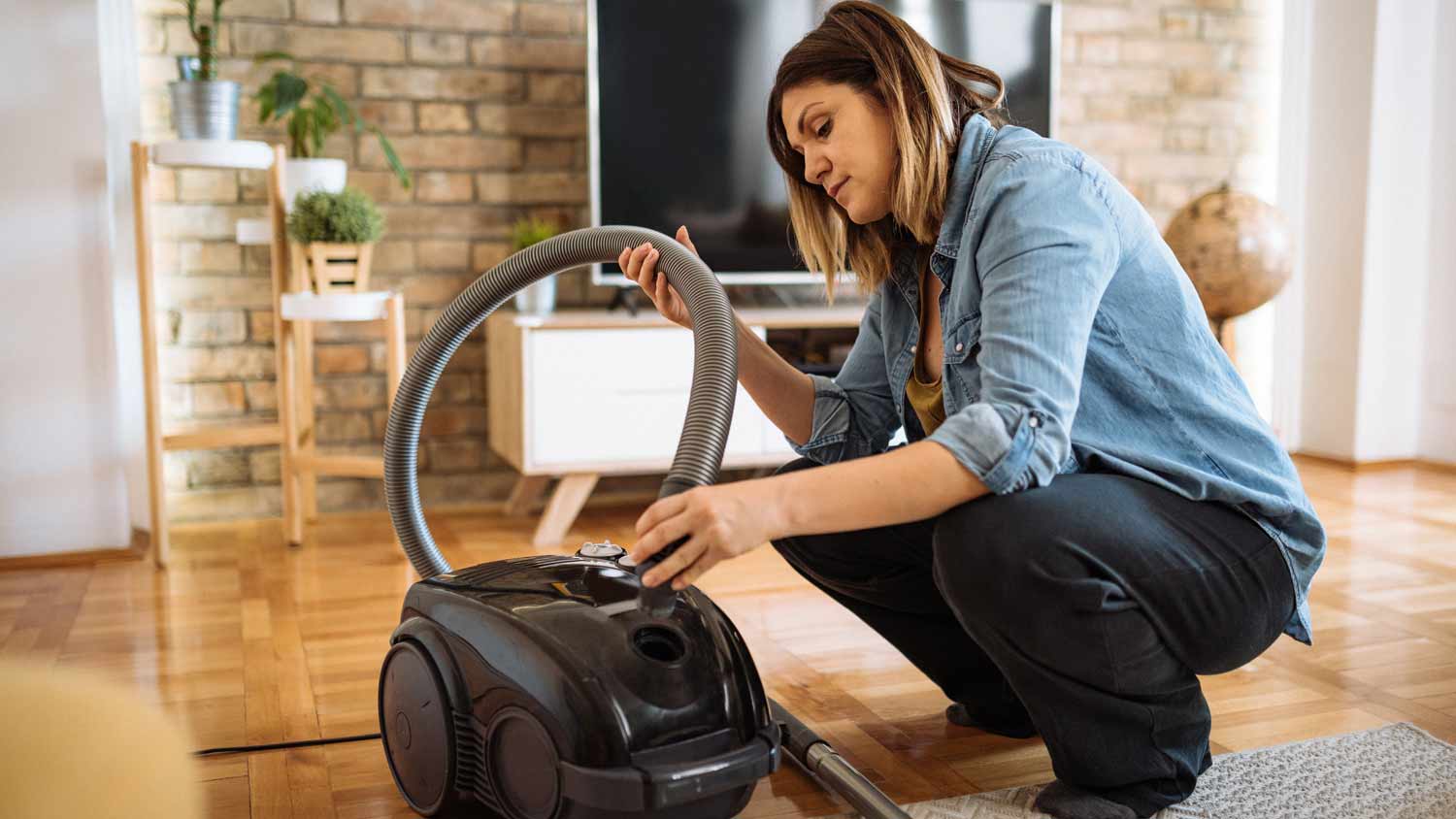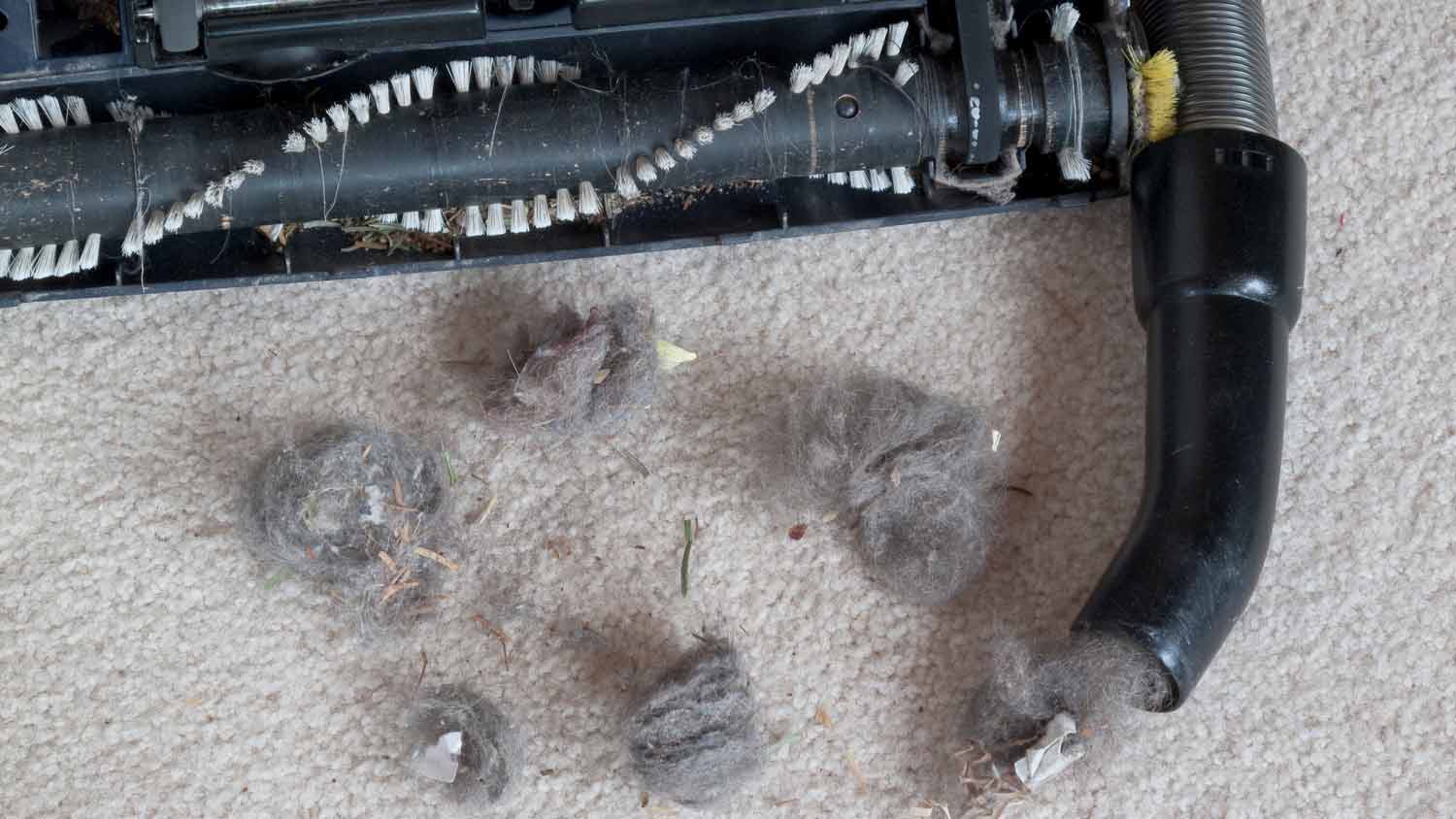
Clean walls are an important part of a well-kept house. Use this wall cleaning cost guide to see what it would cost to hire a professional to get the job done.
Fix most suctioning problems in seconds


A vacuum cleaner that is not suctioning is a common problem.
Blockages and dirty filters are potential causes.
Overfilled collection bags and containers can cause issues, too.
Using proper vacuuming techniques may solve the problem.
If you can’t find the problem, a repair center can help.
Whether you’re in the middle of a serious cleaning session, or are just trying to clean up the latest thing the dog dragged in, you don’t have time for a malfunctioning vacuum. So, if you’re trying to figure out why your vacuum is not suctioning, don’t panic! Chances are good that you can easily and quickly troubleshoot nearly any problem with a vacuum that stopped suctioning. Here are 10 common reasons why your vacuum may have stopped suctioning, and what you can do about it.

A common vacuum cleaner problem is a full collection canister or bag. When the canister or bag is packed with debris, it simply won’t be able to pick up any new debris.
Consider changing the bag when it’s three-quarters full, and empty the container when it’s about half full, to help your vacuum maintain its suction performance.

Many vacuum cleaners have a filter and, if it gets dirty, it’s the likely culprit for why your vacuum is not suctioning.
Nearly all vacuum cleaners have filters that catch dust particles that may not stay inside the bag or container because of their tiny size. The filter keeps this dust from recirculating into the air. If your vacuum is creating a cloud of dust when operating, your filter most likely needs cleaning.
The filter may consist of foam, cloth, or pleated paper in a cartridge. If you are using a vacuum bag, it may have a built-in filter. Some dirty vacuum filters need washing, while others need replacing. If you wash the filter, allow it to dry completely before using it again.
If your vacuum has a dirty filter, it may overheat. Consequently, in addition to causing your vacuum to not suction, a dirty filter may also cause your vacuum to not turn on–or turn itself off after operating for a while.
Some vacuums have removable hoses and other parts that provide extra versatility for using the appliance. If you don’t reattach these parts properly, they could harm the vacuum’s ability to generate suction by affecting the seals in the appliance.
Inspect any areas where connections occur to determine if anything is loose.
If any of the hoses for the vacuum have a blockage, the vacuum can’t suction properly. Items like clumps of pet fur, a stray sock, or a pet toy could block any of the hoses in the appliance.
When inspecting the hoses, pay particular attention to sections where a hose has a curve or kink in it. Look in areas where the hose connects to various parts of the machine, too. These are stress points where materials could collect, cutting off air flow and preventing suctioning.
You may have to remove the hose connections to be able to reach any blockages. Run a pole through the hose after removing it to gently dislodge any blockages.

Over time, one of the hoses on the vacuum may develop a puncture or tear. This breach of the hose material allows air to escape, leaving the machine unable to properly create the suction needed to pick up debris.
If you have an accordion-style hose that stretches out to give you greater length and collapses back down to a small size afterward, be sure to stretch it out to inspect it properly.
If you are trying to operate the vacuum at a height setting that doesn’t match the flooring material you are vacuuming, your vacuum may not suction properly.
The vacuum needs to be close to the flooring to generate the maximum suction power. Use the machine’s height adjustment setting to find the perfect height.

If your vacuum has a spinning brush roll where the suctioned air enters the machine, this roller can collect pet hair, fibers, and other debris that could clog the head of the vacuum.
Inspect the roll to see if it has blockages that need to be removed. Remove any hair and other debris stuck to the brush roll. If something is tightly wrapped around the roll, you may need to use scissors or a utility knife to cut it loose.
Many vacuum designs use a rubber belt to spin the brush bar in the vacuum’s head. These belts will wear out over time, requiring a replacement.
If the belt wears out and snaps, the bar will not spin and it will affect the vacuum’s ability to suction particles and dirt. If the belt stretches out, it also will not spin the bar properly, even though it remains intact.
Along those same lines, if you install a new belt that is the wrong size, it may appear as though the vacuum is not suctioning properly.
You may have to remove the brush bar to check the status of the belt. If it is showing wear, cracks, or tears, it’s time to replace it. If it’s extremely loose, it’s also in need of replacement.
If you see vacuuming as a chore that you want to just finish as quickly as possible, you may increase your chances of ending up with blockages that explain why the vacuum is not suctioning.
Following these tips on how to vacuum can reduce your chance of having suctioning problems:
Picking up tiny items, like socks, by hand
Vacuuming more frequently if you have a lot of tracked-in dirt or pet hair
Brushing your pets outdoors or taking them to a groomer frequently
Checking the condition of the filter regularly
Checking for loose items before vacuuming under furniture
Vacuums have many tiny parts—including tiny gaskets—that can affect the machine’s ability to maintain the seal it needs.
Closely inspect the exterior of the entire appliance. Look for parts that are clearly broken or that appear to no longer be in the proper place. If something looks broken, see if you can order a new part for your particular model.
If you feel comfortable taking the machine apart, you can inspect the interior for broken parts. Otherwise, you may need to visit a repair center.
If you just can’t quite figure out why your vacuum is not suctioning, it could be an issue with the blower motor. At this point, you may need to contact a local vacuum repair center for help. Repairing the motor as a DIY job is extremely difficult without the expertise and tools that the repair center will have.
Always ask for a cost estimate before authorizing any work, just in case the cost of repairs will be close to the cost of a new vacuum cleaner.
While you are waiting for the repaired vacuum cleaner, consider reaching out to a local house cleaning service to help you keep up with the housework.
From average costs to expert advice, get all the answers you need to get your job done.

Clean walls are an important part of a well-kept house. Use this wall cleaning cost guide to see what it would cost to hire a professional to get the job done.

After a construction project, getting your home clean and living-ready is a top priority. Learn who to hire for post-construction cleanup for the best results.

Construction leaves dust and debris in its wake. If you hire a pro to handle it, here are the post-construction cleanup questions you should be ready to answer.

Learn how to prepare for a house cleaner to ensure whoever you hire can do their job properly while you keep your home, family, and possessions safe.

Not sure the benefits of a housekeeper vs a house cleaner? Learn which pro you should hire to help keep your home clean.

Life is messy, but when it comes to pee in the house, it takes on a whole new meaning. Read this to learn how to get urine smells out of your couch.